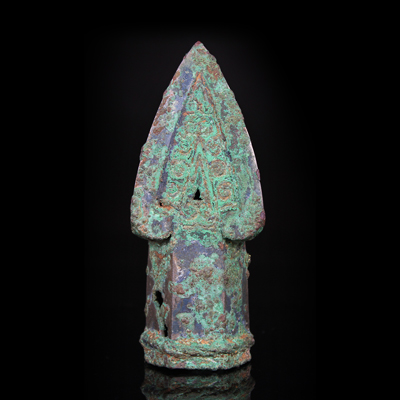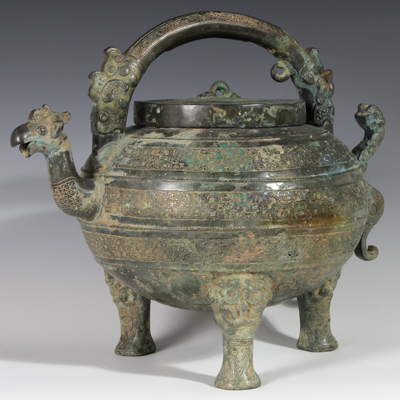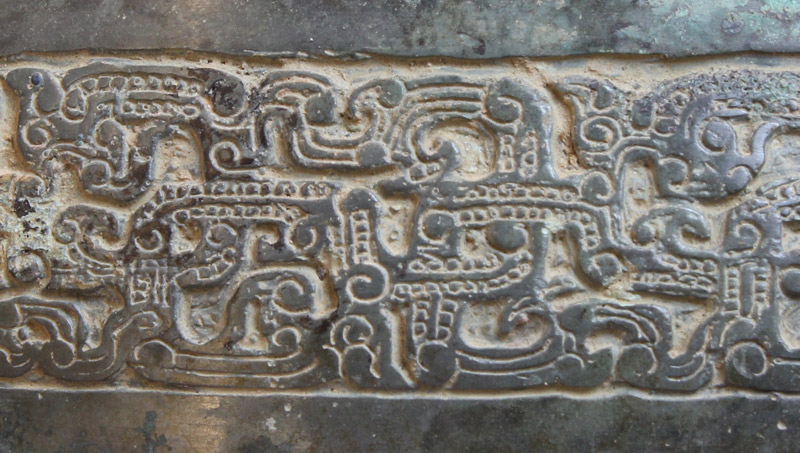Bronze 青銅
China's Bronze Age
Bronze is a metal alloy of primarily copper and other metals, usually tin or lead. When an early civilization developed bronze, its members were able to make stronger tools and weapons and advance their culture. China’s Bronze Age started as early as the Erlitou culture (c. 1900-1500 BC) and lasted through the Shang (1600–1046 BC) and Zhou (1046 BC–256 BC) dynasties. Bronze goods were produced on a massive scale during this roughly 2,000-year period, and the material continues to be admired and used for precious objects in China to this day.

Halberd Fitting 戟配件, bronze 青銅, 10.4cm tall, Shang dynasty 商 (1600–1046 BC), China 中國. Cat#140194.
Ritual Bronze Vessels
The Chinese Bronze Age saw the proliferation of utilitarian objects such as tools and weapons, but musical bells and ritual bronze vessels of great importance were also made. These vessels were used to worship ancestors, following the longstanding Chinese custom of honoring your ancestors in the afterlife: According to tradition, the spirit of the deceased lives on and must be treated as a living person. These vessels were used to offer spirits food, water, and wine. They were ultimately buried with the dead, only to be found later and used by rulers to claim a divine mandate to the throne, having come to possess the vessels of past rulers.

Tripod Wine Vessel with Lid (He) 盉, bronze 青銅, 24cm tall, Spring and Autumn Period 春秋 (771–476 BC), China 中國. Cat#18074.
Bronze Motifs
Many bronze objects also feature patterns of abstract clouds, thunder, interlaced dragons, and other mythical beasts such as the taotie—generally represented as a mask with no lower jaw. Although taotie designs vary from period and place of production, they are often found on the handles or legs of vessels. The significance of the taotie is unclear to scholars, although one theory suggests that the monster liked to eat too much and ate its entire body so he became a warning against greed.

Interlaced Dragon Pattern from the above bronze vessel.